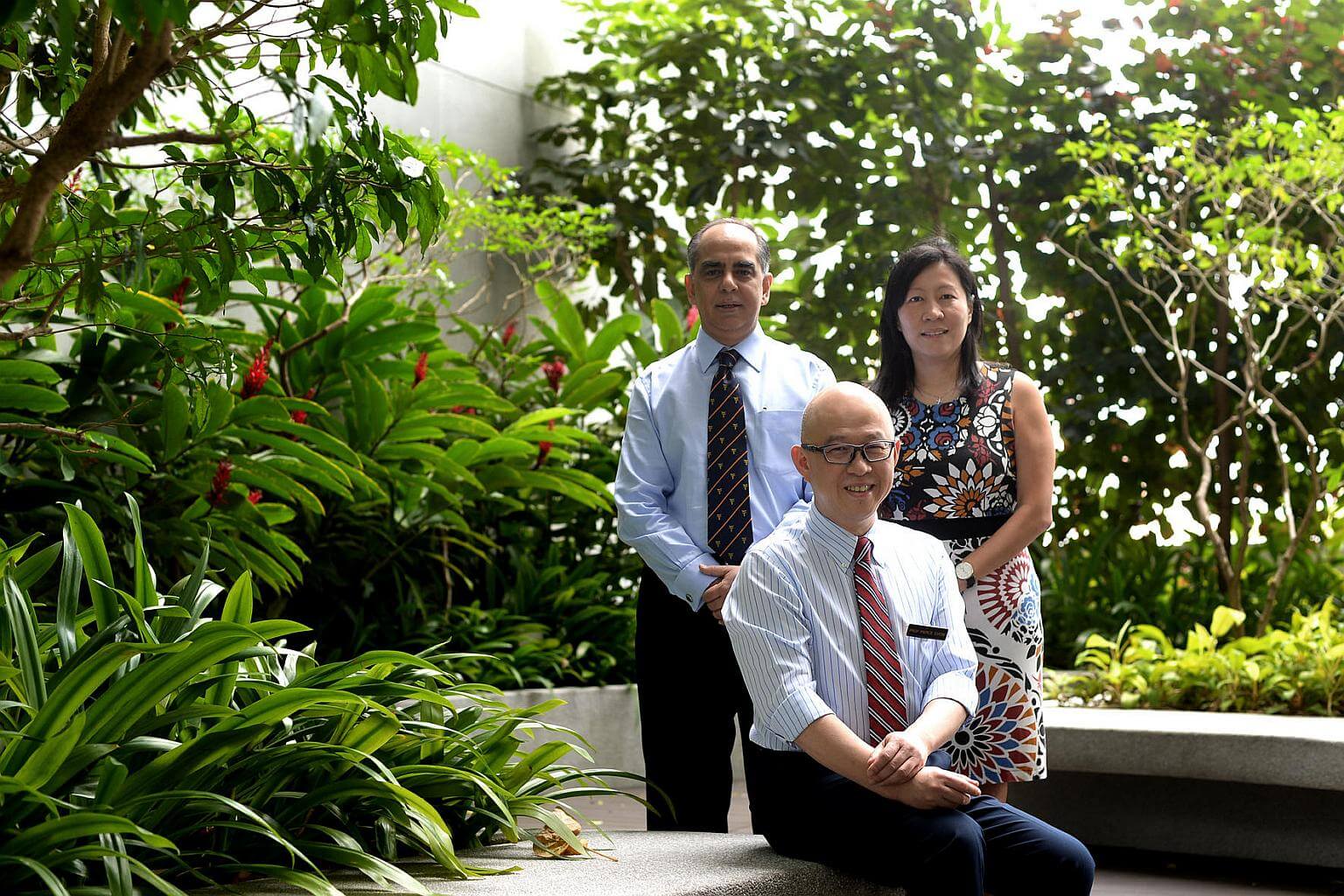Clinician scientists still in short supply
Doctors cite long hours, poor career paths and lack of mentors as deterrents
Sign up now: Get ST's newsletters delivered to your inbox

The College of Clinician Scientists was launched by a group of accomplished clinician scientists in August this year. Among them are (from left) Associate Professor Mahesh Choolani from the National University Hospital (NUH), the college's president Professor Pierce Chow, and Associate Professor Lynette Shek from NUH.
ST PHOTO: ARIFFIN JAMAR
Carolyn Khew
Follow topic:
Despite the Government's efforts, there remains a shortage of clinician scientists or doctors in research.
These doctors, who double up as scientists, may be involved in investigating diseases that big pharmaceutical firms do not consider lucrative enough to find a cure for.
Those in the field said the shortage is because of long hours spent juggling two jobs, poor career paths and a lack of mentors to train younger doctors who are interested in research.
Deputy Prime Minister Teo Chee Hean had announced in 2010 that the Government aimed to double the number of clinician scientists to 160 by last year.
The Ministry of Health (MOH) told The Sunday Times that while the number of clinician scientists has increased steadily over the years, there are only 106 of them in Singapore.
These clinician scientists are funded under various awards by the National Medical Research Council (NMRC), which oversees the development and advancement of medical research in Singapore.
Clinician scientists work in research areas such as cancer, cardiovascular disease, diabetes, infectious diseases, as well as neurological and sense disorders.
Professor Chng Wee Joo, director and senior consultant at the National University Cancer Institute, said Singapore is still in the early stages of developing clinician scientists.
"While funding has improved greatly, most hospitals and departments, even in academic institutions, are still more focused on clinical service and may not provide enough protected time or infrastructure and resources for research," said Prof Chng.
It is not uncommon for clinician scientists to do research activities, like drafting grant proposals or reading up on journals, after hospital hours.
Prof Chng said another sticking point is that the career path and long-term job security of clinician scientists are not so clear.
"However, it is important to note that we started this journey not so long ago and like other such journeys, the beginning is always challenging," he said.
To address some of these issues, the College of Clinician Scientists was launched by a group of 72 clinician scientists in August.
It provides training and mentoring for young doctors. It held workshops in August and last month, and hopes to link young doctors with clinician scientists so that they can be mentored.
The workshops cover topics such as investigator-led trials and how to get funding for research.
Next year, it plans to have a database of local clinician scientists so that younger doctors can link up with them directly, said the president of the college, Professor Pierce Chow. He is a senior consultant surgeon at the National Cancer Centre Singapore.
"Younger people who wish to do research find it difficult to succeed as they do not have access to established clinician scientist mentors," said Prof Chow.
"To do high-level research, you need someone who is accomplished to help you - someone who can open doors, give you directions and help you troubleshoot."
The United States and Canada also face a similar shortage. The lack of research funding - which clinician scientists become dependent on for their salary - adds to the challenge of them remaining in the field.
According to the MOH website, $269 million worth in grants was committed under the NMRC in financial year 2015.
Out of this, almost a quarter - 23 per cent - went to funding the Human Capital Awards. These include the Clinician Scientist Award, which provides salary and funding support for these scientists to carry out their research work.
The MOH also provides scholarship programmes to support budding clinician scientists as they pursue research training.
"The NMRC and the MOH recognise the importance of having good mentors for young aspiring clinician scientists, and will continue to work with the healthcare clusters to ensure that (they) are provided various support mechanisms, including mentorship, guidance and protected time for their research," said an MOH spokesman.
Over at SingHealth and National University Health System (NUHS), workshops are conducted to help younger doctors get grants for their research projects.
There are 56 clinician scientists at SingHealth who have received research funding under NMRC while NUHS has 46, compared with just six in 2005.
Professor Wong Tien Yin, medical director of the Singapore National Eye Centre and vice-dean of clinical sciences at Duke-NUS Medical School, estimated that there has to be around 150 to 200 clinician scientists, out of the more than 13,000 doctors in Singapore.
He said clinician scientists are the "glue" and the "bridge-builders" between strong basic research in Singapore and the strong clinical capabilities in healthcare institutions.
"They are the 'interpreters' of biomedical research breakthroughs, and identify which research is clinically useful and where there are 'clinical needs'," said Prof Wong.
"Without a sufficient cohort of clinician scientists, there will be a major gap between discovery and clinical application."

